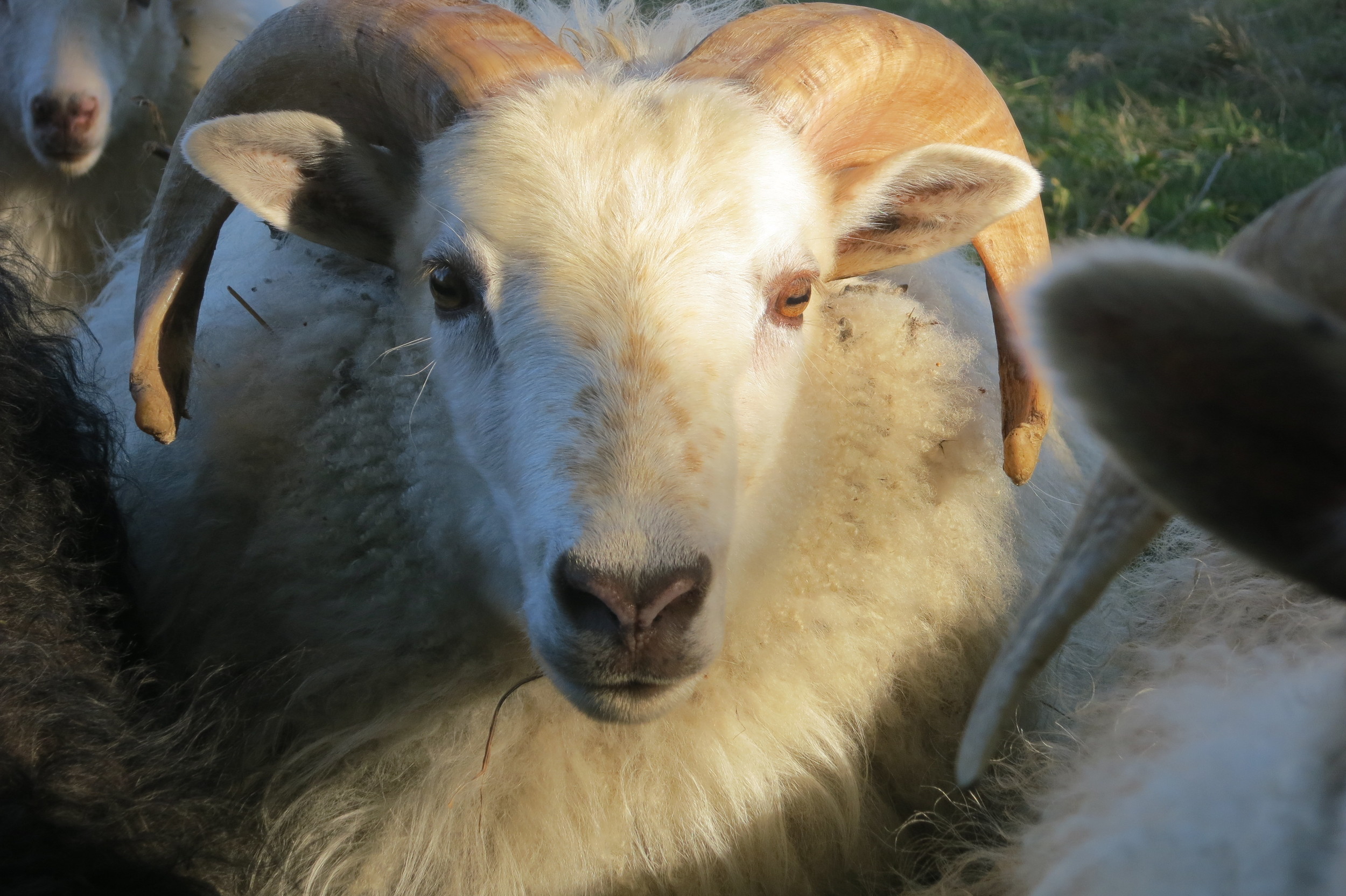Icelandic Sheep Wool is amazing! According to the Icelandic Sheep Breeders of America: " The Icelandic sheep produces a premium fleece. The fleece is dual coated, with a fine, soft undercoat called thel and a longer, coarser outer coat called tog. The tog fiber with a spinning count of 56-60 and a micron count of 27-30, grows to a length of 6-8" in six months. It is lustrous, strong, water- and wear-resistant, and sheds off the rain and weather. Thel is the soft downy undercoat, with a spinning count of 64-70 and a micron count of 19-22, growing to a length of 2-4". The thel provides the loft for the outer coat and insulation for the sheep. Tog grows from the primary hair follicles and the thel from the secondary follicles. Tog is a true wool, and is not a kemp or guard hair. The combination of the two fibers on the sheep gives superb protection from the cold and wet. Icelandic fleeces are open and low in lanolin. The weight loss when washed is significantly less than many other breeds. The average adult yearly fleece total weighs 4-7 lbs. Producers often shear their Icelandics twice a year. This is due, in part, to the fact that Icelandics have a natural wool break in late winter for the rams generally, and in spring for the pregnant or lactating ewes. Shearing at or around the time of the natural break is recommended to remove the "old" coat before the "new" coat grows in. The sheep are sheared again in the fall to harvest the fleeces before the animals go on hay for the winter. These fall-shorn fleeces are very soft and clean and can bring a premium price per pound.The two coats can be separated by hand for special projects, or they may be processed together. The traditional lopi is a lightly spun blend of tog and thel. Thel is very soft and downy, with an irregular crimp and can be used for baby garments, and for the fine shawls in the style of the Wedding Shawl. The tog is similar to mohair; wavy or corkscrewed rather than crimped and is wonderful in worsted spinning.The versatility of the wool, the ease of spinning and the wide variation of tones and colors are a true delight to handspinners, and put Icelandic wool into the exotic or premium category. It is also known as one of the best fleeces for felting, which is fast gaining popularity in the craft community".
Skirting a spotted lamb fleece on shearing day.
Many of our sheep have solid patterns or large spots, but there are a few who have this type of spotting in their undercoat. As their fleece grows out it looks white (sometimes with large dark spots ). We call this picture "shearing a dalmatian".
Skirting fleece




























